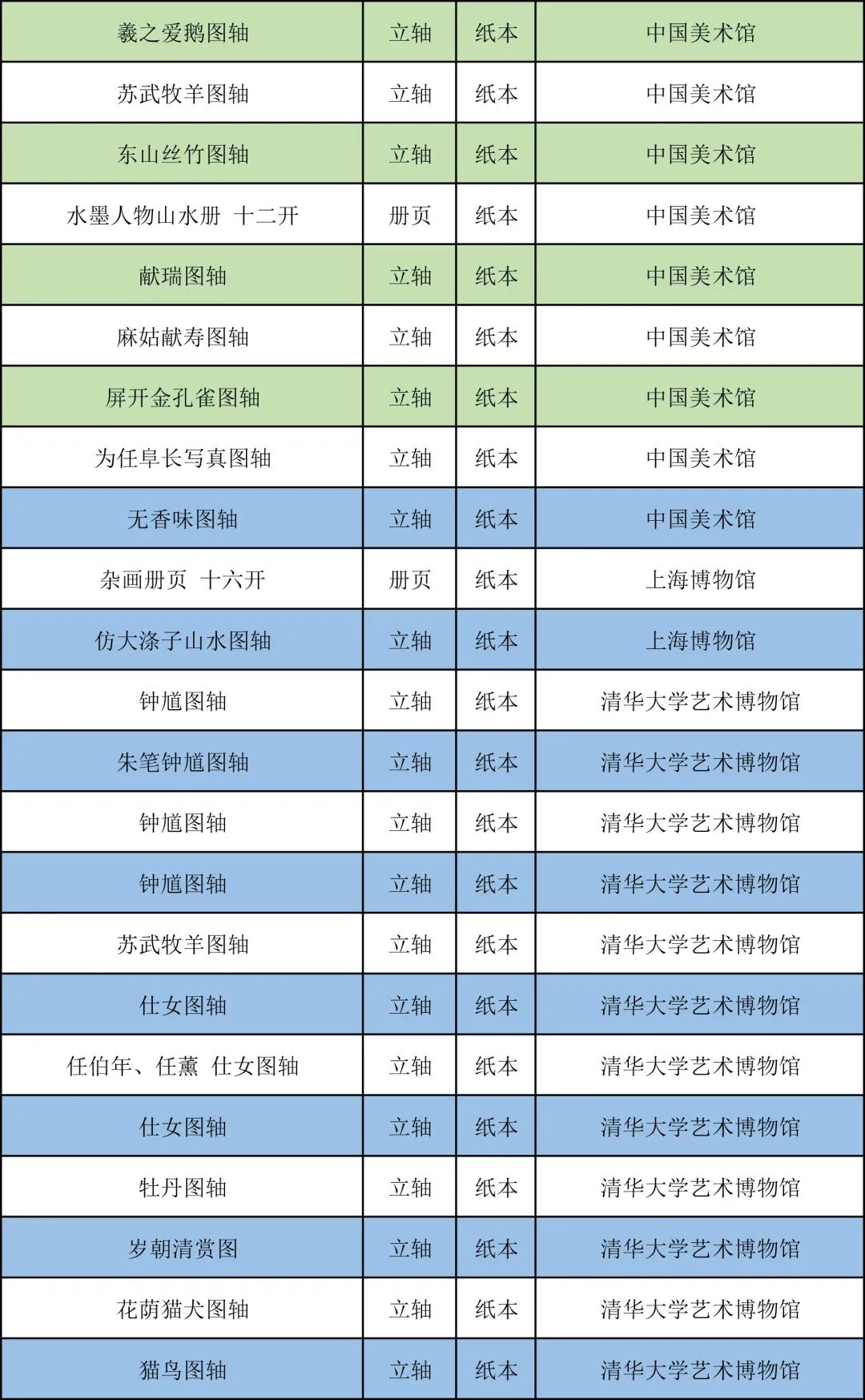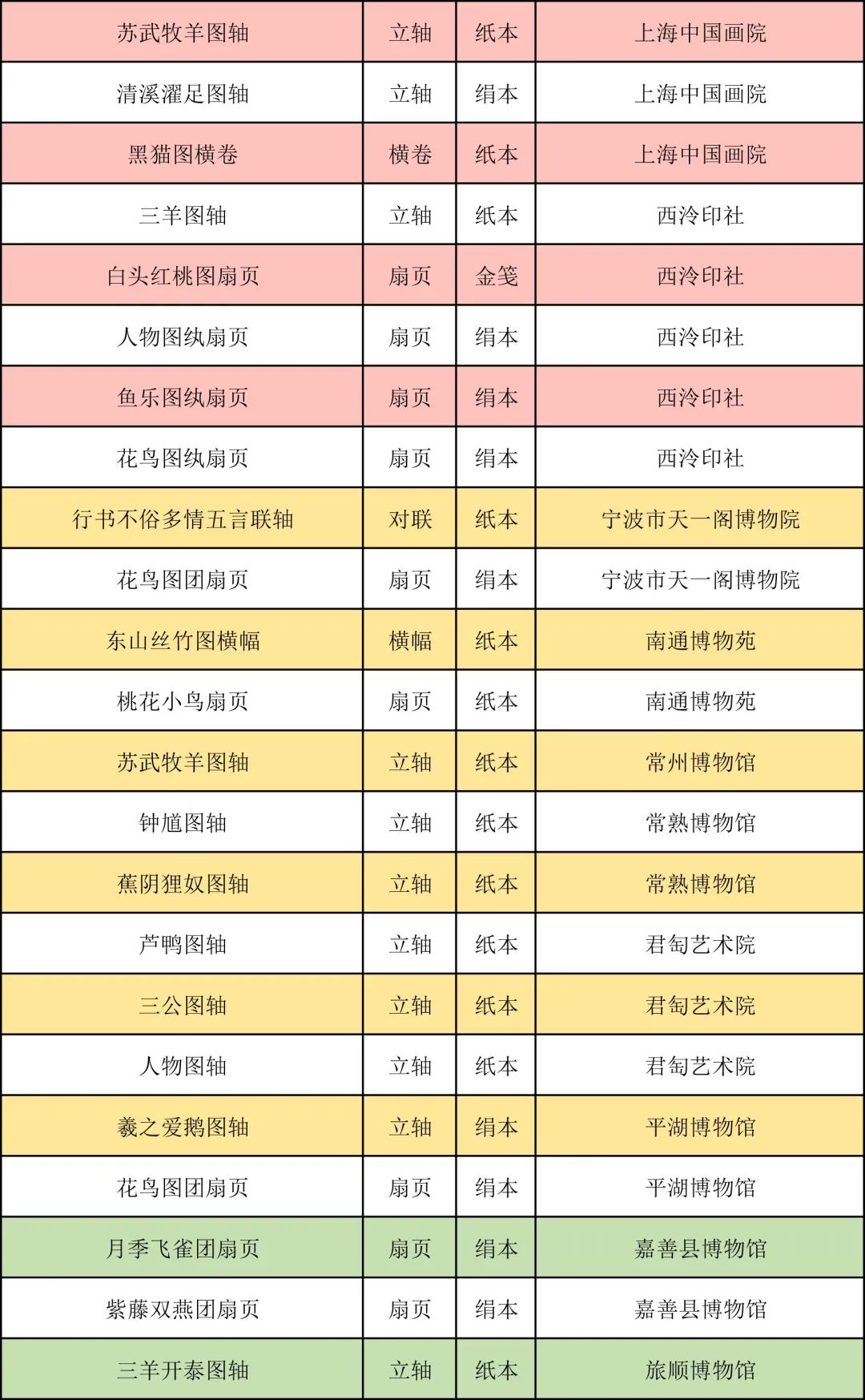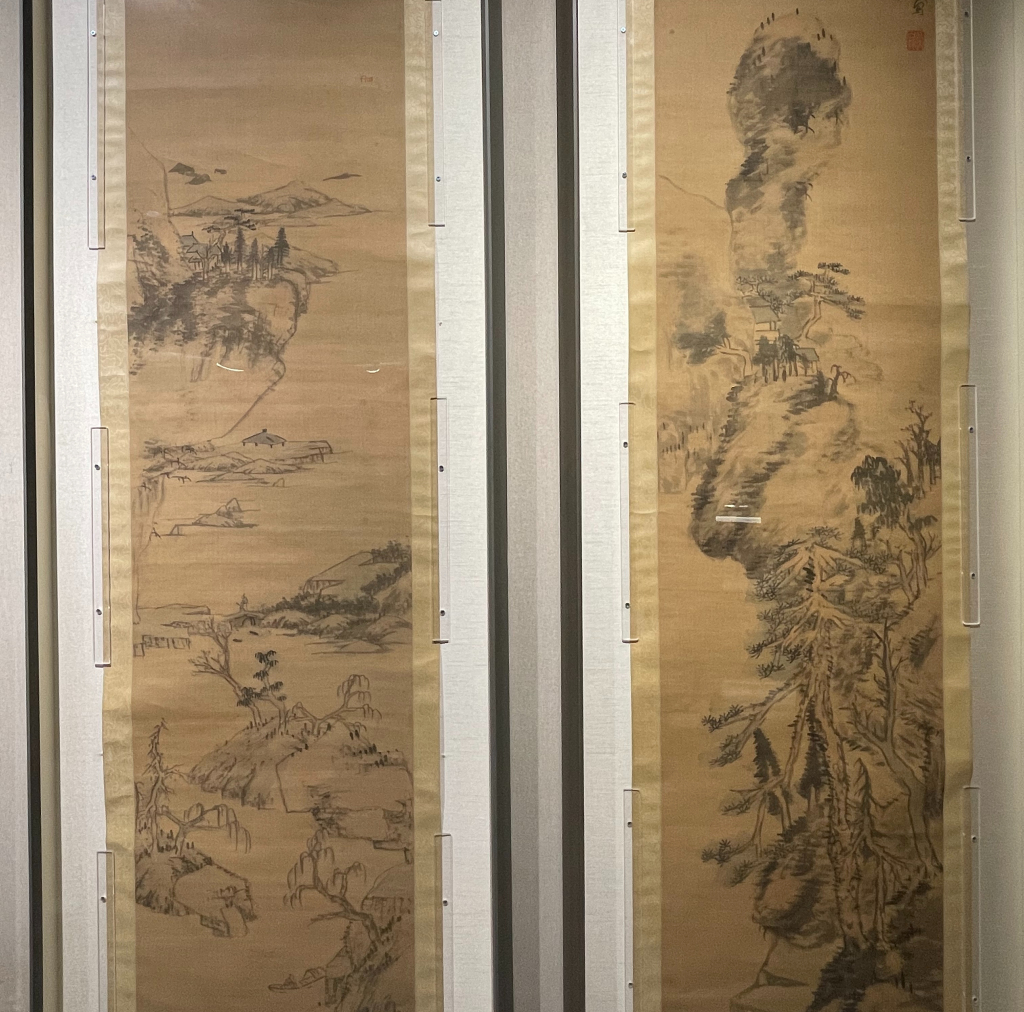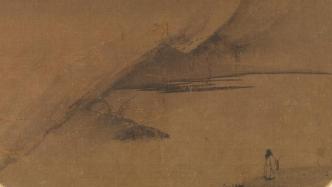
Ren Bonian (1840-1895), whose given name was Yi and whose courtesy name was Bonian, was born in Shanyin, Shaoxing Prefecture, Zhejiang Province. Ren Bonian is a pioneer in the history of modern Chinese painting and a leader of the Shanghai School in the history of modern Chinese art. Xu Beihong called him "the first Chinese painter after Qiu Shizhou".
The Paper has learned that on September 9, “The Impermanence of the Brush, the Elegance and the Richness of the Painting - An Exhibition of Ren Bonian’s Paintings” was launched at the Shaoxing Museum (Xu Wei Art Museum). This is the first time that China has systematically launched an exhibition of Ren Bonian's calligraphy and painting. The exhibition brings together 158 pieces (groups) of calligraphy and painting from 24 cultural and museum institutions including the Palace Museum, National Art Museum of China, Shanghai Museum, Tianjin Museum, Guangdong Provincial Museum, and Shenyang Palace Museum. The collection comprehensively demonstrates Ren Bonian’s artistic characteristics and the inclusive, open and diverse characteristics of Shanghai-style paintings represented by him.

"The impermanence of the brush leads to the richness of elegance - Ren Bonian's painting works exhibition" scene
"This exhibition of Ren Bonian's paintings has obvious characteristics and comprehensive exhibitions. It is the first special exhibition in China to comprehensively and systematically display Ren Bonian's life and artistic style; the exhibition has become the largest and largest collection of Ren Bonian's paintings in history. This is a major exhibition with the largest number of exhibitors. Many of Ren Bonian’s works are exhibited for the first time to meet the audience. The entire exhibition has a clear theme, exquisite exhibits, complete series, and clear context, which allows people to appreciate his fresh, lively and penmanship. The artistic characteristics of impermanence, elegance and richness." Shen Yiping, curator of this exhibition and deputy director of Shaoxing Museum, introduced in an interview with The Paper.
It is reported that this exhibition includes 24 domestic cultural and museum units including the Palace Museum, National Art Museum of China, Shanghai Museum, Tianjin Museum, Guangdong Provincial Museum, Shenyang Palace Museum, Shaoxing Museum, etc., and selects 158 masterpieces of calligraphy and painting by Ren Bonian, his teachers, friends, and students. There are 27 first-class cultural relics, 32 second-class cultural relics, and 79 third-class cultural relics. Many works are meeting the audience for the first time. The exhibition focuses on Ren Bonian's figure paintings, flower-and-bird paintings, as well as his drawing objects and inheritance from his teachers and friends. It systematically presents the formation and influence of Ren Bonian's painting style, as well as the inclusive, open and diverse spirit of Shanghai-style painting represented by him. Features

Paper scroll of Su Wu’s Muyang, 180 cm long, 98.3 cm wide, collected by Tsinghua University Art Museum
Ren Bonian sold paintings with his father since he was a child, later learned painting from Ren Xiong and Ren Xun, and later moved to Shanghai to make a living selling paintings. In modern times, Shanghai was a metropolis where Chinese and Western cultures gathered, wealthy gentry and businessmen gathered, and business flourished. The Shanghai market's requirements for calligraphy and painting are completely different from those of traditional court nobles and literati. Under the guidance of changes in social and cultural tastes and market trends, realistic popular painting styles are more popular in the Shanghai market. This atmosphere is conducive to the coexistence and co-prosperity of works of various schools and different styles, forming the Shanghai School of Painting. Regardless of the personal style of Shanghai-style painters, reality and secularity are their common characteristics.

Ren Yiji's scroll of the Jinqing Dynasty, collected by Tianjin Museum
Under the demand of the market, Ren Bonian did not stick to the traditional views and combined Chinese and Western techniques, which gave him great room for development of his painting skills. In the tide of public aesthetics, Ren Bonian's superb realism ability and folk culture accumulated in his early years laid a solid foundation for him to become the leader of the Shanghai style. The themes of his paintings are rich, the content is popular, the shapes are accurate, the patterns are fresh, and the creativity is endless. His works sell well and receive rave reviews.

Ren Bonian's black cat painting horizontal scroll (detail) on paper, 31 cm in length and 83.5 cm in width, collected by Shanghai Chinese Painting Academy
For example, when he was observing and drawing cats, he went up to the roof to watch the cats fight. He climbed over the window and crawled on the tiles, followed them, and drew sketches. In short, the Shanghai School of Painting and Ren Bonian achieved mutual success and brought traditional Chinese painting to the public.
Ren Bonian's father, Ren Hesheng, was a rice merchant and folk portrait painter. He was influenced by his family. Ren Bonian was able to paint at a young age without the old habits of a literati, and later became a professional painter. In his youth, he traveled to Ningbo and Suzhou, studying painting with Ren Xun (1835-1893), and also had a personal relationship with Ren Xiong. He first learned from Chen Hongshou, and then learned the double-hook filling method and coloring techniques since the Jin and Tang Dynasties. He inherited the tradition and made great progress in his painting skills. He also received guidance and support from his predecessors such as Hu Gongshou (1823-1886) and Zhang Xiong (1803-1886) to further improve the style of his works and his painting skills.
In addition, famous masters from the previous generation such as Hua Yan, Bada Shanren, Yun Shouping, Shi Tao, and Xu Wei were all included in Ren Bonian's practice. He took advantage of Shanghai's multicultural conditions and absorbed Western painting techniques such as sketching and watercolor. Ren Bonian combined traditional, folk and Western painting methods, took their advantages and used them for my own use. He was good at innovation and gradually formed a fresh and bright unique style, which was very outstanding at the time.
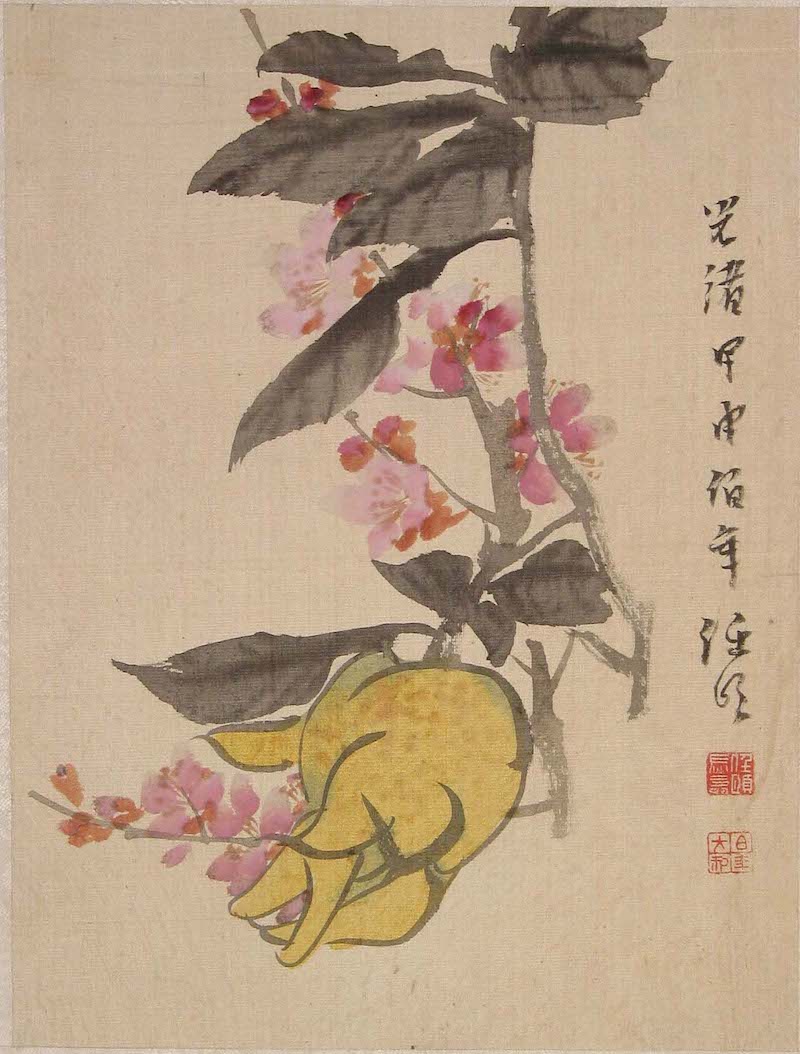
Album pages of Ren Bonian's paintings of flowers and fruits, silk, 27 cm long, 19 cm wide, collected by the Shenyang Palace Museum

Album pages of Ren Bonian's paintings of flowers and fruits, silk, 27 cm long, 19 cm wide, collected by the Shenyang Palace Museum

Album pages of Ren Bonian's paintings of flowers and fruits, silk, 27 cm long, 19 cm wide, collected by the Shenyang Palace Museum
Ren Bonian, Xu Gu, Pu Hua and Wu Changshuo are known as the "Four Masters of the Shanghai School". Ren Bonian had a harmonious relationship with the famous masters of the "Shanghai School of Painting" and learned from each other. Their different styles competed together in Shanghai, which promoted the healthy development of Shanghai's calligraphy and painting market.
Ren Bonian and Xu Gu (1823-1896) admired each other's artistic talents and paintings. Xu Gu's elegiac couplet for Ren Bonian gave a high-level summary of his artistic techniques: "The pen is impermanent, and he creates new ideas, and his art is the best. Who can succeed him, I know he will decline." The theme of this exhibition "The Impermanence of the Brush" comes from Xu Gu's evaluation.
Ren Bonian was slightly older than Wu Changshuo (1844-1927), and the two were both teachers and friends. They learned from each other and were well-known. Ren Bonian made many portraits of Wu Changshuo, and Wu Changshuo made many seals for Ren Bonian. "Portrait in the Turnip Pavilion" (1883) on display this time is a portrait that Ren Bonian painted for Wu Changshuo when the two met for the first time. It is extremely precious.

Ren Bonian's Dongshan Silk and Bamboo Scroll on paper, 182.2 cm long and 96.4 cm wide. Collection of the National Art Museum of China.

Ren Bonian's Wu Qing Pavilion long scroll on paper, 125 cm long and 39 cm wide, collected by Anji County Museum

Banner of Dongshan silk and bamboo painting painted by Ren Bonian, collected by Nantong Museum
Ren Bonian's painting style is fresh and refreshing, with clear meanings. His flower and bird paintings have the highest artistic achievements. However, when figure paintings in the late Qing Dynasty declined as a whole, his figure paintings suddenly emerged and attracted much attention. He added his own skills and emotions to Chen Hongshou's figure painting style. Even the content that ancient painters had painted long ago, in Ren Bonian's paintings, amidst the unprecedented great changes of the Chinese nation in the second half of the 19th century, it was The novelty is brilliant. His paintings of heroic figures in history not only express his feelings, but also contain the painter's feelings about his family and country. In addition to their aesthetic value, they also have ideological value. For example, "Dongshan Sizhu" comes from the allusion of Xie An, a famous official of the Eastern Jin Dynasty, who hid in Dongshan, Shangyu, Kuaiji in his early years. It shows that the author hopes that an extraordinary talent can rise from Dongshan and save the country from danger. The images of Su Wu he painted were always majestic and resolute, reflecting the folk sentiments of Chinese society at that time.
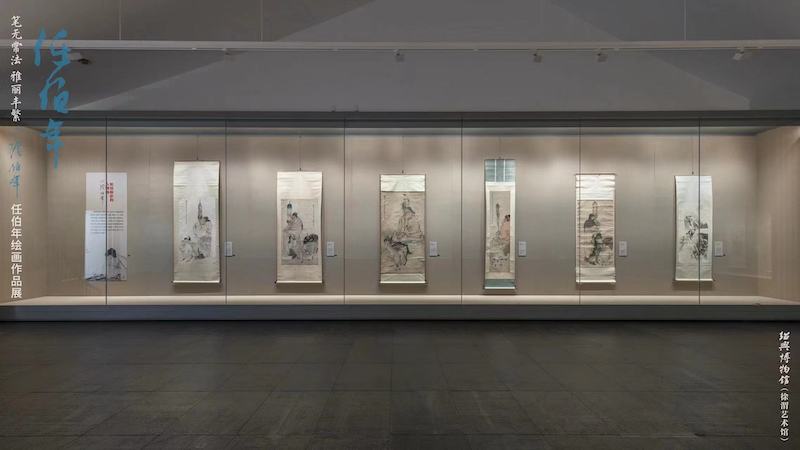
"The impermanence of the brush leads to the richness of elegance - Ren Bonian's painting works exhibition" scene

"The impermanence of the brush leads to the richness of elegance - Ren Bonian's painting works exhibition" scene
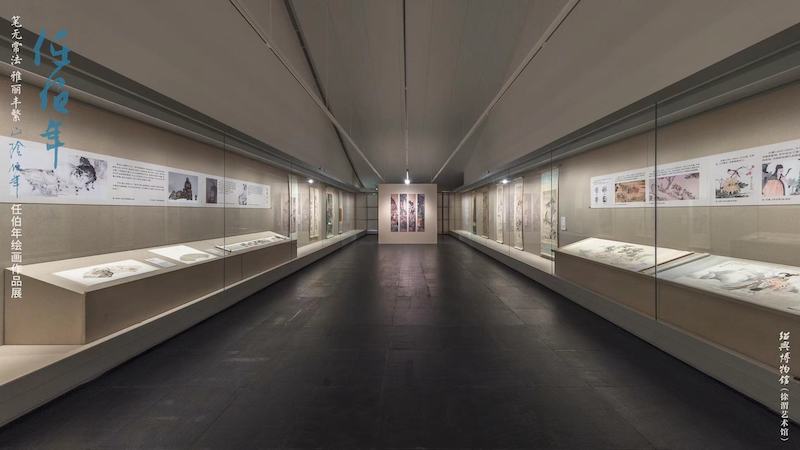
"The impermanence of the brush leads to the richness of elegance - Ren Bonian's painting works exhibition" scene
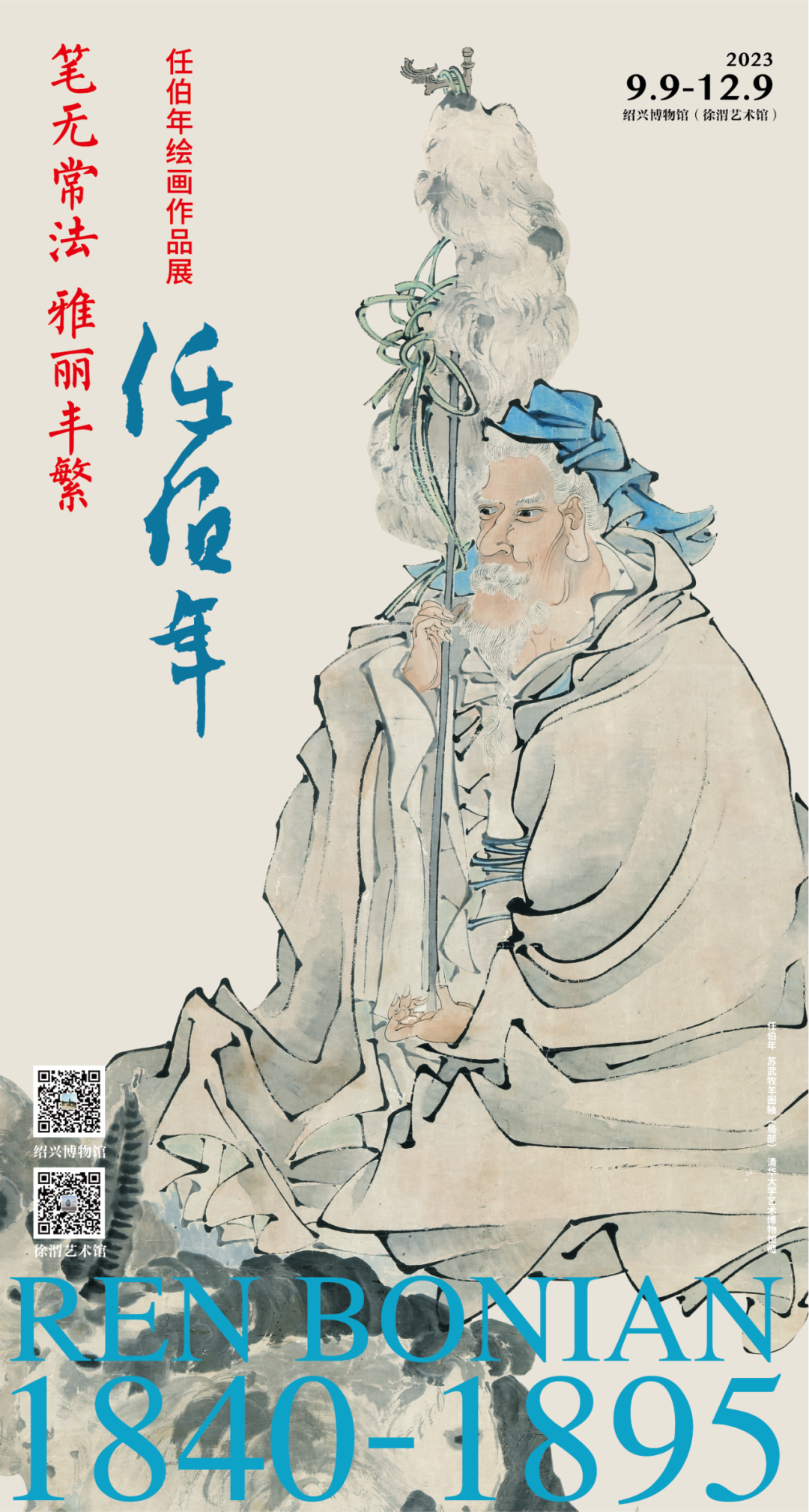
"The impermanence of the brush leads to the richness of elegance - Ren Bonian's Painting Exhibition" poster
It is reported that "The Immortality of the Brushwork - The Exhibition of Ren Bonian's Painting Works" is hosted by the Shaoxing Municipal Government. It is the successor to "The Abnormal Ivy - Xu Wei's Calligraphy and Painting Works Exhibition" and "The Ancient and Strange - Chen Hongshou's Calligraphy and Painting Works Exhibition". After "Watching - Exhibition of Archaeological Achievements of Imperial Tombs of the Two Song Dynasties", another annual exhibition has been carefully prepared. The exhibition will last for 3 months until December 9.
Attached: Exhibit Catalog of "The Impermanence of the Brushwork and the Richness of Elegance - Exhibition of Ren Bonian's Paintings"

